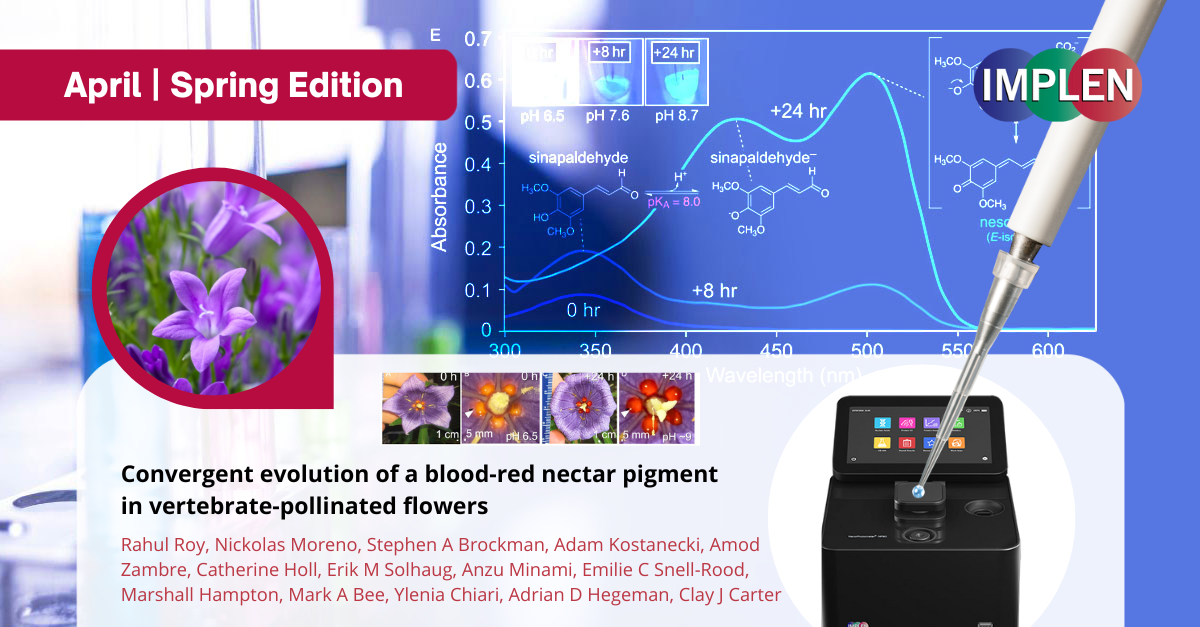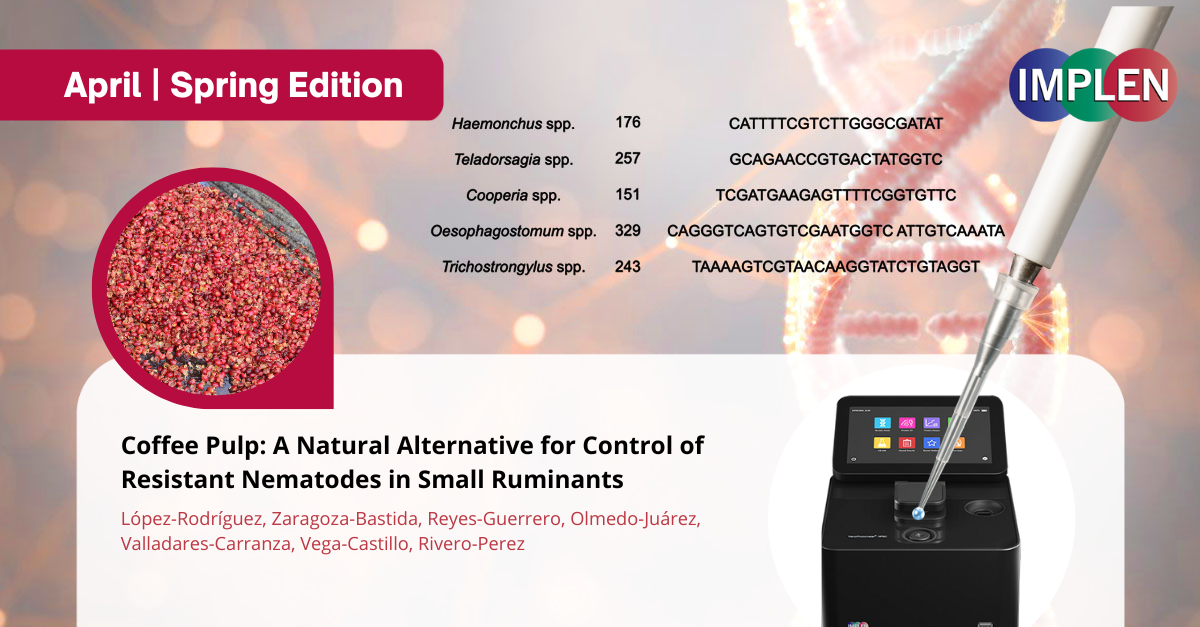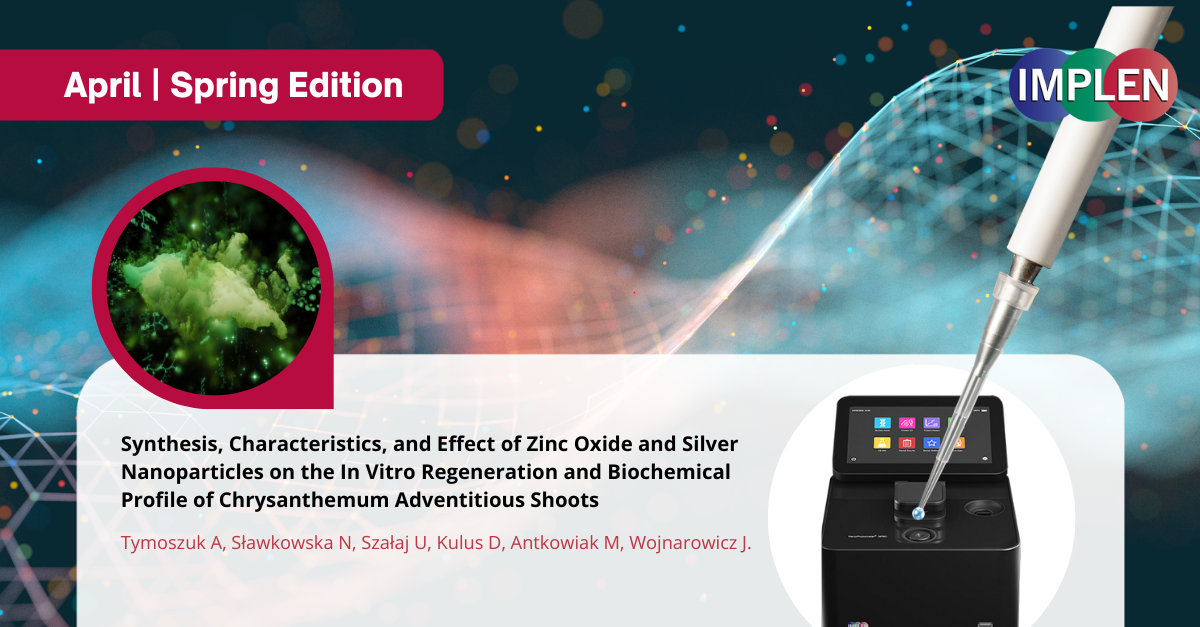Implen Journal Club | April Issue Spring Edition |
|
This issue of the Implen NanoPhotometer® Journal Club: Spring Edition is highlighting a fascinating study on the evolution of nectar pigment in vertebrate-pollinated flowers. Using the NanoPhotometer from Implen, Roya et al.,researchers from the University of Minnesota, utilized spectrophotometric analyses to study the convergent evolution of a blood-red nectar pigment in vertebrate-pollinated flowers and to compare the pigment composition of nectar across different plant species. They found that it has evolved independently multiple times in different lineages, indicating that convergent evolution is a common phenomenon in the evolution of floral traits. This study highlights the importance of understanding the selective pressures that drive the evolution of traits in different lineages. The NanoPhotometer from Implen is a powerful tool that has helped researchers gain valuable insights into the genetic and biochemical processes that underlie evolution. The NanoPhotometer® was used in this study to measure the absorbance spectra of the nectar of different plant species and to quantify the amount of anthocyanin pigment in the nectar of the different plant species. |
|
Next issue is covering a study in the Archives of Agronomy and Soil Science by Sharon Yu Ling Lau et al., which highlights the impact of ammonium sulfate application on an oil palm plantation in tropical peat. With a growing need for sustainable practices, it's essential to understand the impact of human activities on the environment. Using the NanoPhotometer from Implen, researchers were able to assess the impact of fertilizer application on microbial diversity and greenhouse gas emissions. This study shows the importance of careful management of fertilizer application to mitigate negative environmental impacts in agriculture. Advanced technologies like the NanoPhotometer® can help researchers gain a better understanding of environmental impacts and pave the way for more sustainable practices in agriculture and other industries. The NanoPhotometer is a powerful tool that allows researchers to quickly and accurately quantify nucleic acid concentrations and assess the purity of their samples. With its use in environmental research, we can continue to advance our understanding of environmental impacts and develop more sustainable practices. The NanoPhotometer® played a crucial role in this study by providing accurate and precise measurements of DNA concentration, which enabled the researchers to assess microbial diversity and greenhouse gas emissions in the soil samples. |
|
Next issue is highlighting a recent study that has found that coffee pulp may be a natural alternative for controlling resistant nematodes in small ruminants. The study, conducted by López-Rodríguez et. al. in Mexico, found that coffee pulp extract showed significant anthelmintic activity against these nematodes. Small ruminants, such as sheep and goats, are commonly affected by nematode infections, which can lead to decreased production and even death. Resistance to anthelmintic drugs is becoming increasingly common, making it difficult to control these infections. The use of coffee pulp extract as an anthelmintic could provide a natural and sustainable solution. Coffee pulp is a byproduct of coffee production and is often discarded, causing environmental problems. By using it as a natural alternative to anthelmintic drugs, it could not only benefit small ruminant health but also provide an environmentally friendly solution to waste management. The use of the NanoPhotometer® in this study allowed for precise analysis of the chemical composition of the coffee pulp extract by quantifying extracted genomic DNA (gDNA). This allowed them to determine the presence of certain compounds, such as polyphenols, which are known to have anthelmintic activity, providing important information for further research and development of this natural alternative. |
|
The final issue is featuring a new study published by Tymoszuk et. al. in the Materials journal highlighting the potential use of nanoparticles to improve the growth and biochemical profile of chrysanthemum adventitious shoots in tissue culture. In this study, researchers used uv/vis spectroscopy to measure the content of various plant metabolites to obtain valuable information on the biochemical profile of the chrysanthemum adventitious shoots, which could be used to optimize tissue culture conditions and improve plant growth and quality. The use of nanoparticles and advanced techniques has significant implications for the agricultural and horticultural industries, potentially leading to increased yields and improved product quality benefiting farmers, consumers, and the environment.
The NanoPhotometer® NP80 was an instrumental tool in this study allowing the researchers to accurately measure the content of various plant metabolites including anthocyanins, chlorophyll a, chlorophyll b, carotenoids, and phenolic compounds at specific wavelengths (λmax): 530 nm, 645 nm, 662 nm, 470 nm, and 765 nm for anthocyanins (cyanidin-3-glucoside), chlorophyll a, chlorophyll b, carotenoids, and phenolic compounds, respectively. This provided valuable information on the biochemical profile of the chrysanthemum adventitious shoots. This information could be used to optimize the tissue culture conditions and further improve the growth and quality of the plants. |
©2023 Implen. All rights reserved.



